| St
Michael's Parish Church of Brent Knoll Somerset |
The village of Brent Knoll is located in the northern area of the County
a few miles south of the Mendip Hills.
The church dates from the the 11th century and has had many
renovations and additions through several centuries.
It is a Grade 1 Listed building, first listed in February 1961.
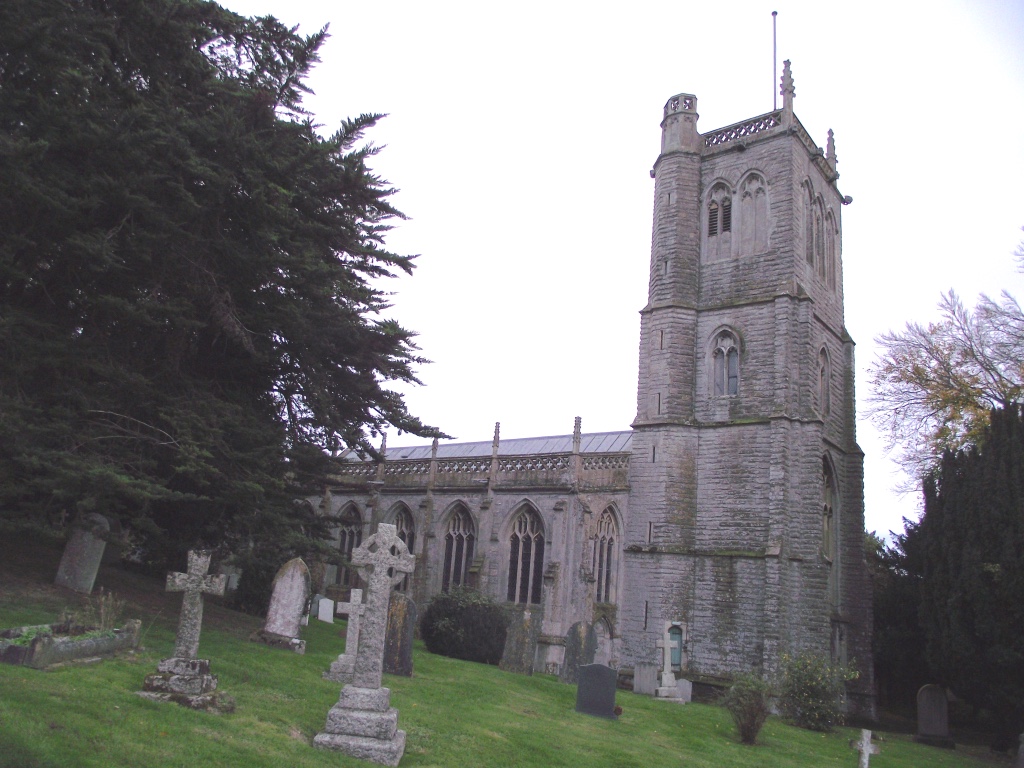 |
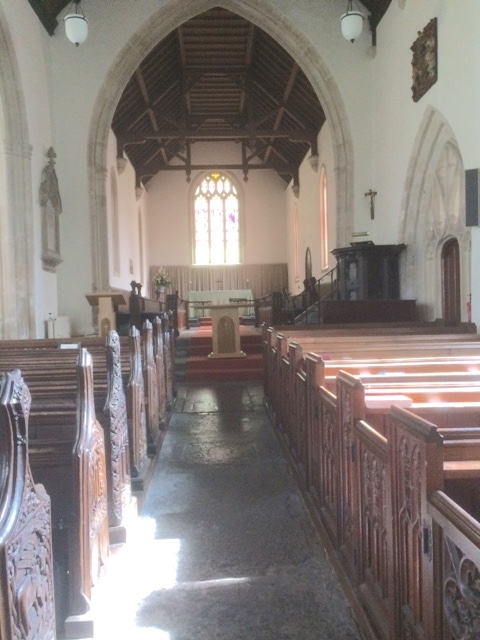 |
The heating system in St Michael's was an exciting historic discovery for the Heritage Group as it is very rare
to find a Victorian cast iron pipework distribution system with its original radiators and the name of the installer
displayed on a nameplate. The heating system is therefore of historic and engineering heritage value.
It appears from the type of some pipework, fittings and valves installed that the original cast iron system was
added to and extended during the early decades of the 20th century.
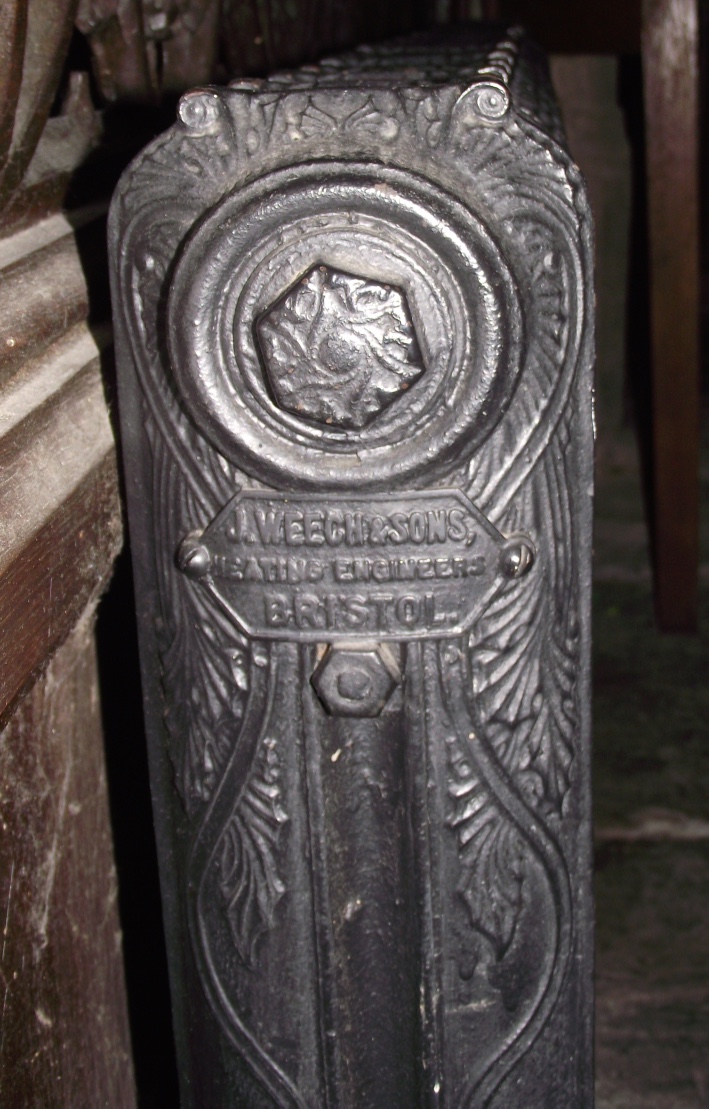 |
The cast iron pipework and type of purpose made pipe fittings dates the heating system from the late Victorian period and was installed by J Weech & Sons, Heating Engineers from Bristol. They had their own ironfoundry in central Bristol where they cast boilers, pipe coil heaters, radiators, pipework and specially shaped cast iron pipe fittings. |
JOHN WEECH born 1842 Langport Somerset died 1910 Bristol aged 67 years.
John Weech first appears in the Bristol trade directory in the late 1870's as a Horticultural Builder with works
in Colston Street Bristol. In the 1880's he changes title and becomes a Hot Water Apparatus Maker and has
moved to Upper Maudlin Street Bristol. This is most likely the site where his iron foundry was located.
In the 1914 Kelly's trade directory the firm is listed as John Weech & Sons Ltd Horticultural Builders
and Heating Engineers. The firm is not listed in the 1936 Kelly's directory.
It is possible that during the 1920's the large firms G N Haden's, Brightside Engineering and Drake Scull
had established offices in Bristol and competition for work had become fierce.
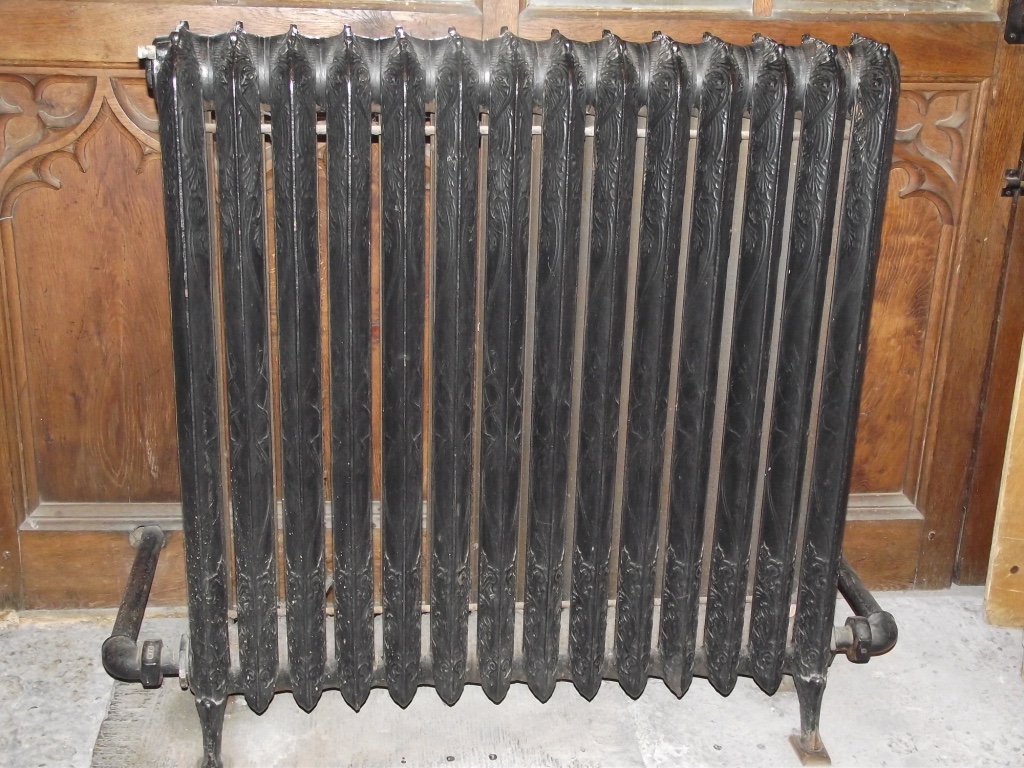 The radiators are of an early pattern that used tie bars with gaskets to clamp the sections together. |
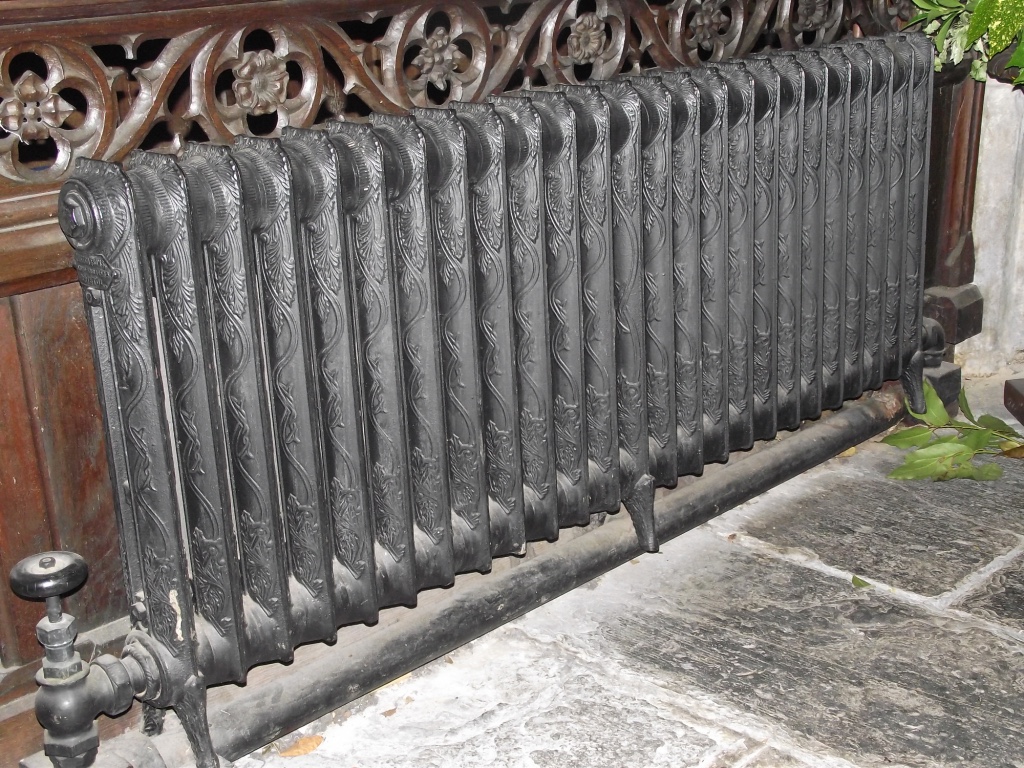 The radiators by J Weech & Sons have sections of a highly decorative pattern of a most unusual design. |
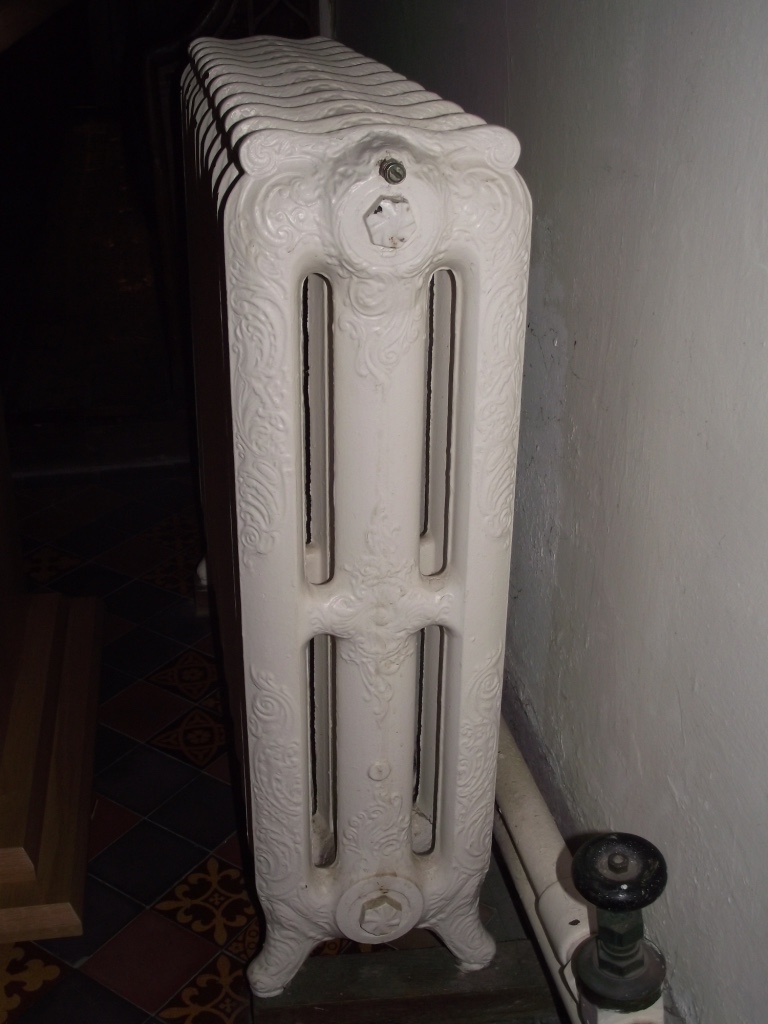 |
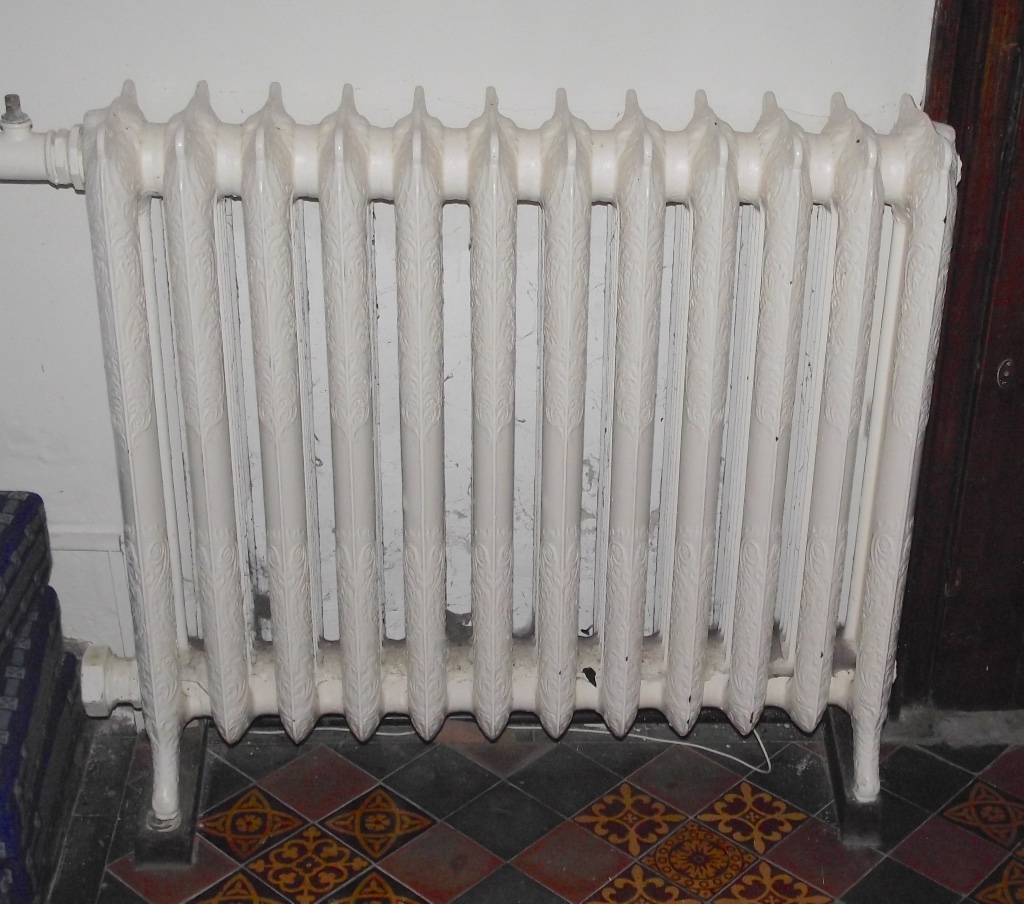 The 3-column ornate decorative design radiators in the Chancel are of a later period. The sections are jointed together with threaded nipples in the top and bottom waterways. |
Selection of the CI fittings purpose made to suit this installation
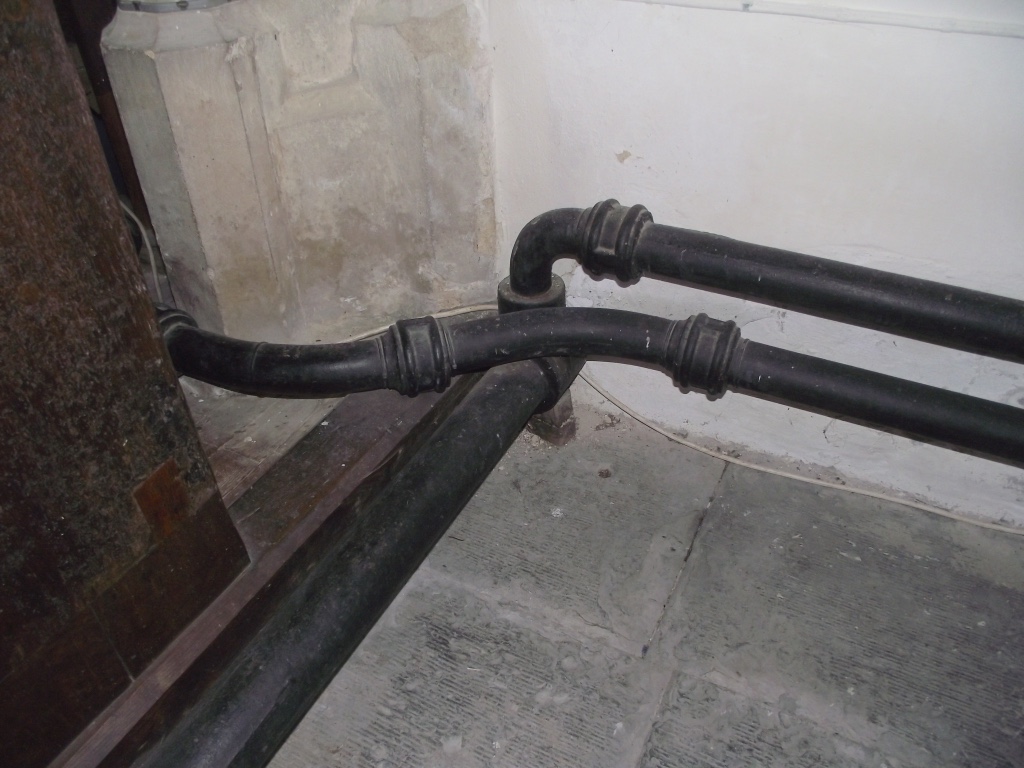 |
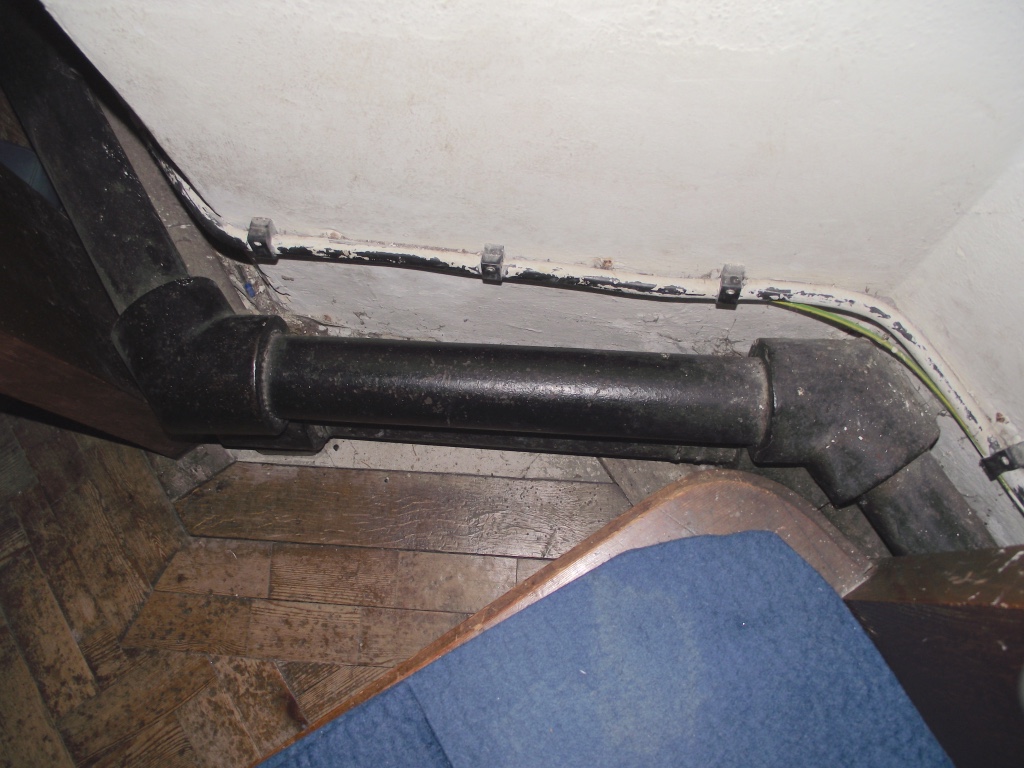 |
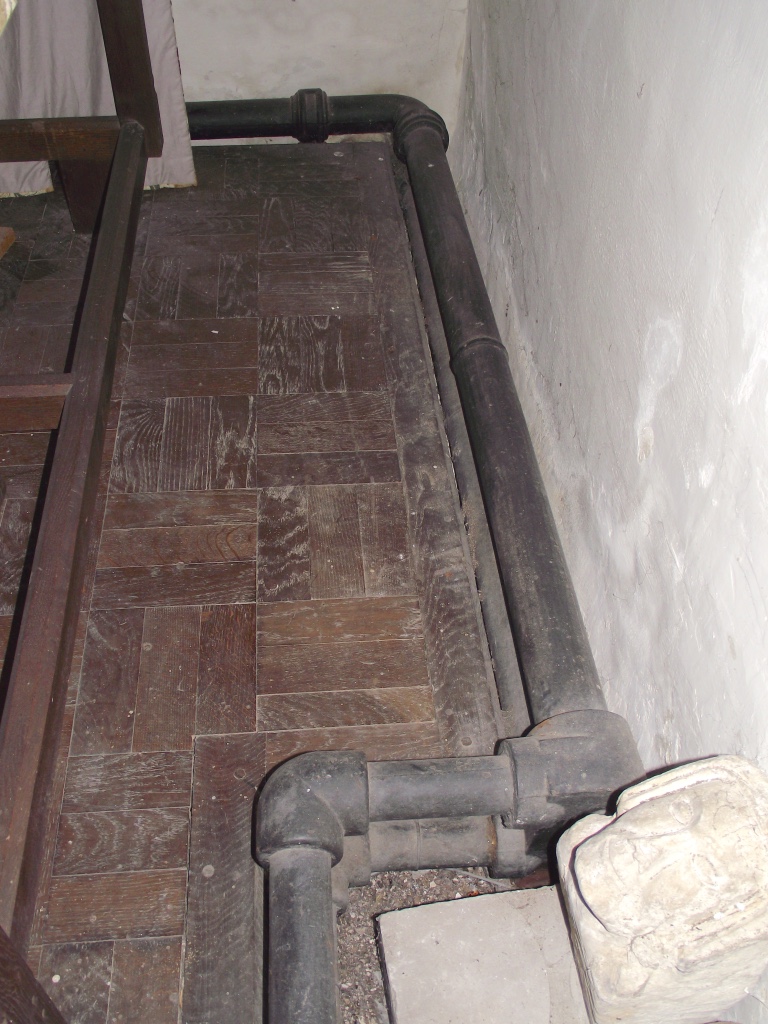 |
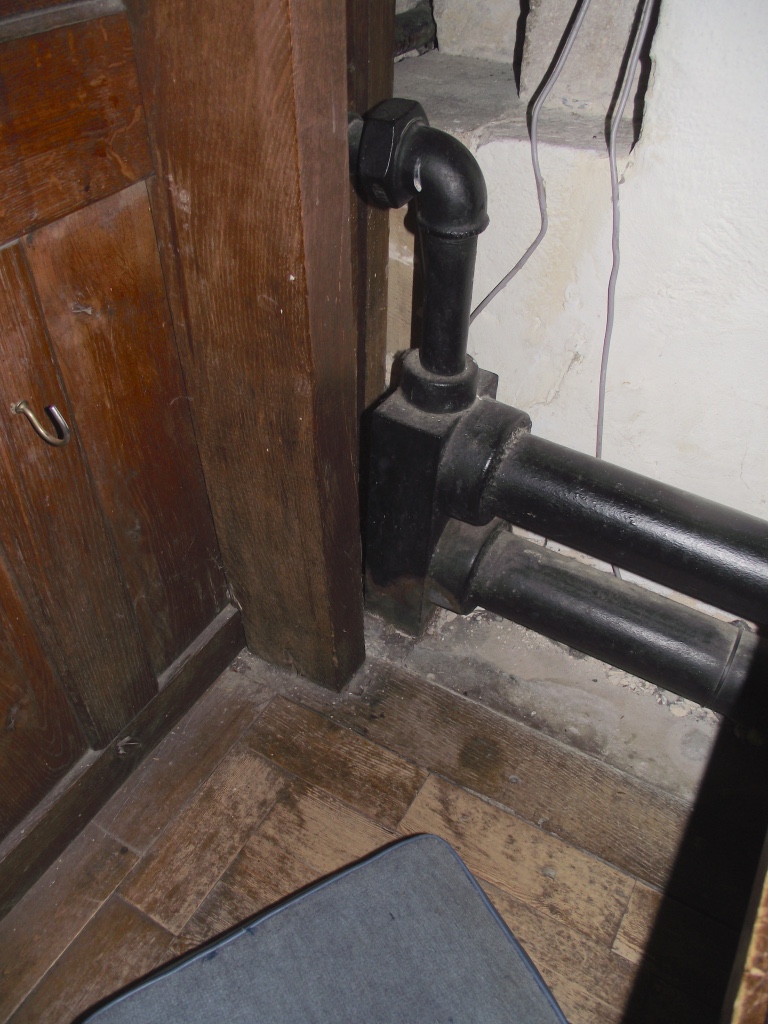 |
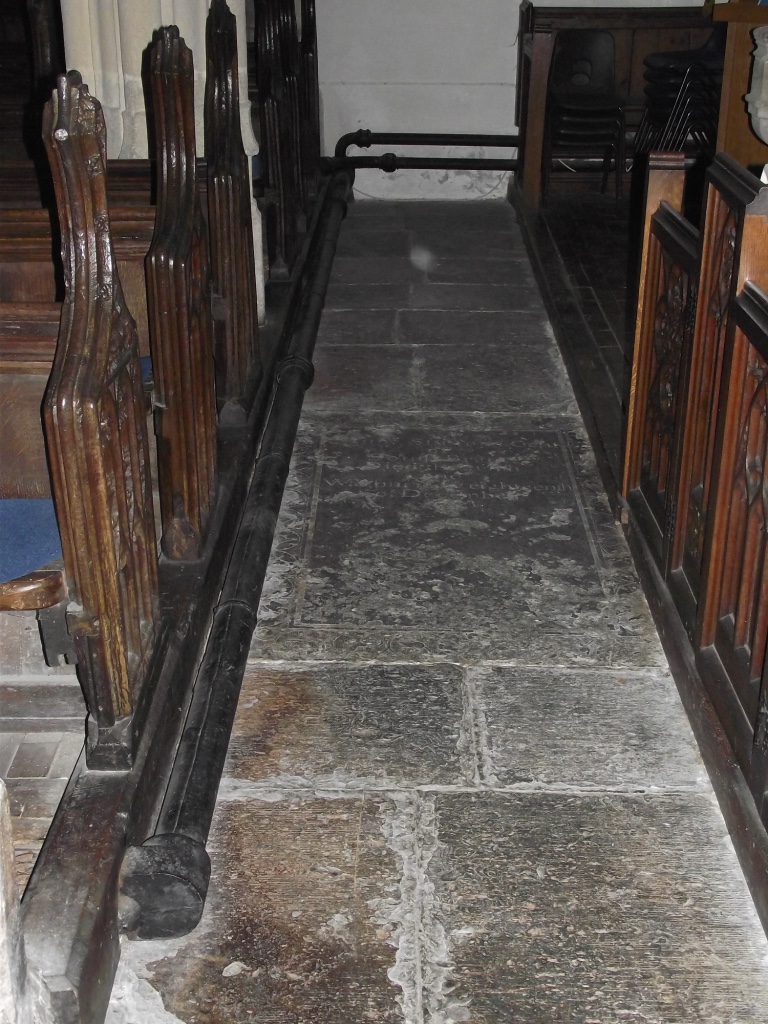 From the selection of various cast iron fittings that can be seen in the church it appears that most of the pipeline fittings were purpose made to suit each individual siting suiting the layout of the church building and its arrangement of pews. The pipework is laid directly on the flagstone floor with no supports or brackets. |
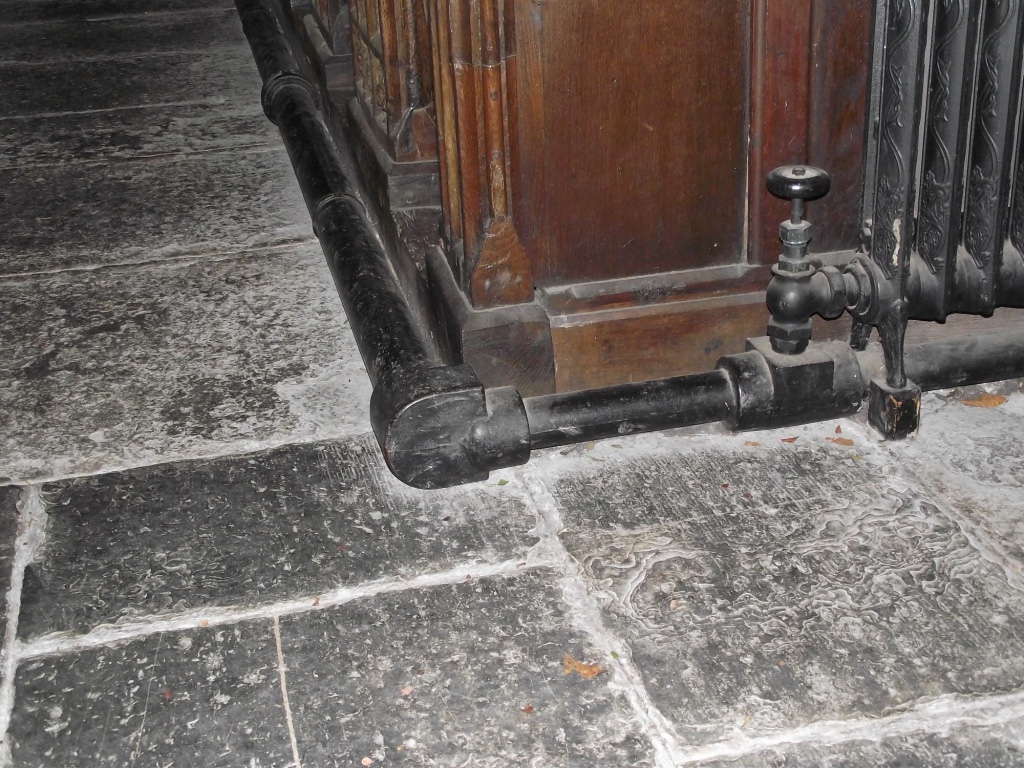 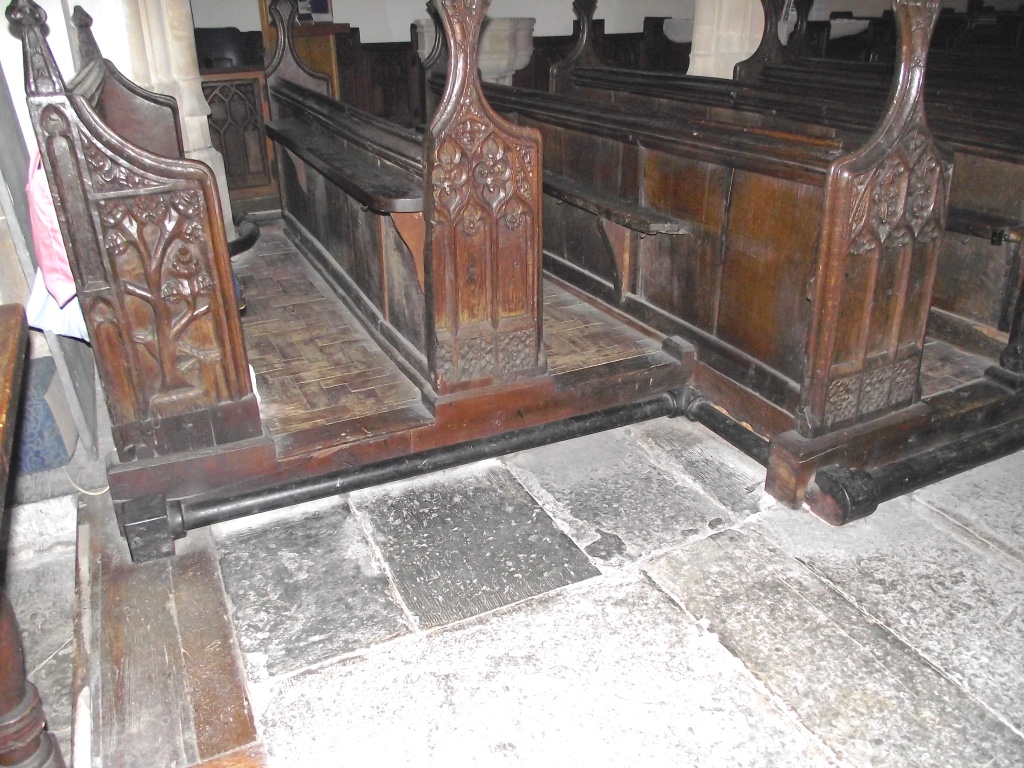 All the original cast iron pipework is jointed by socket & spigot joints, most likely caulked and sealed with yarn and lead. |
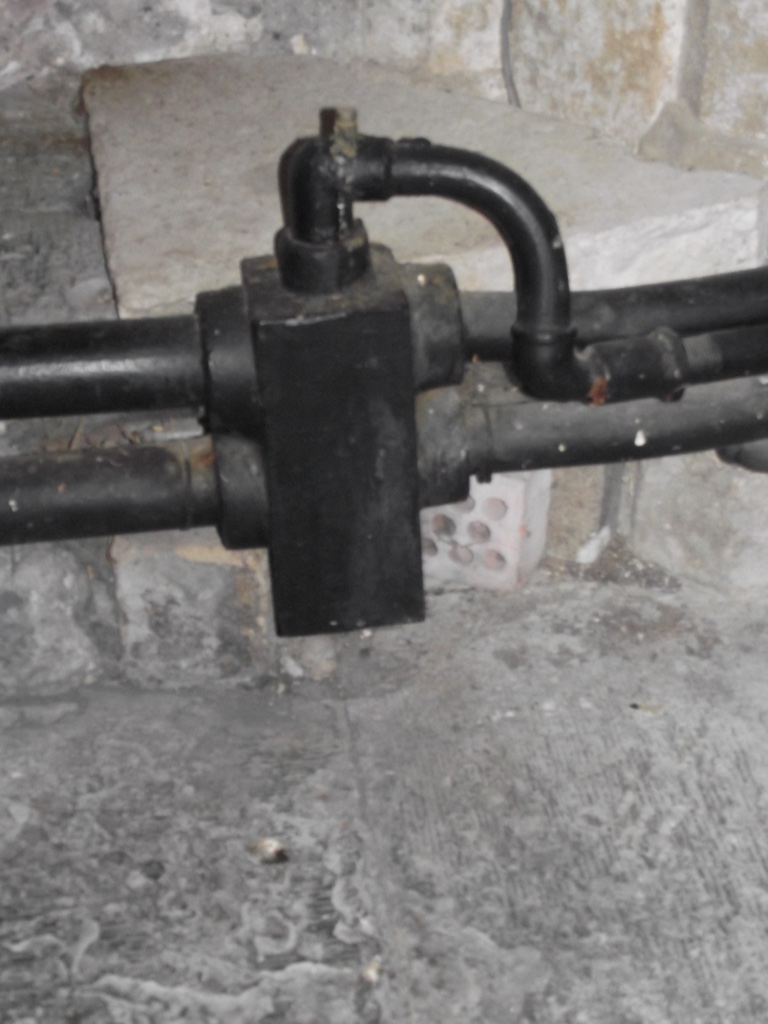 |
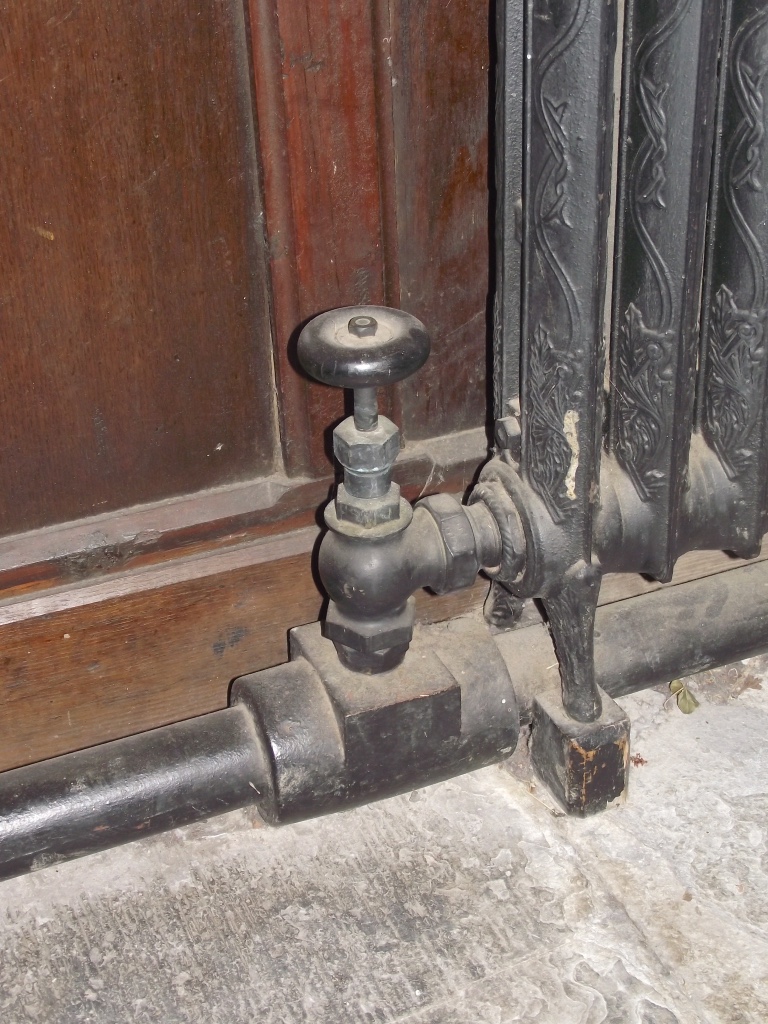 |
Expansion Joints
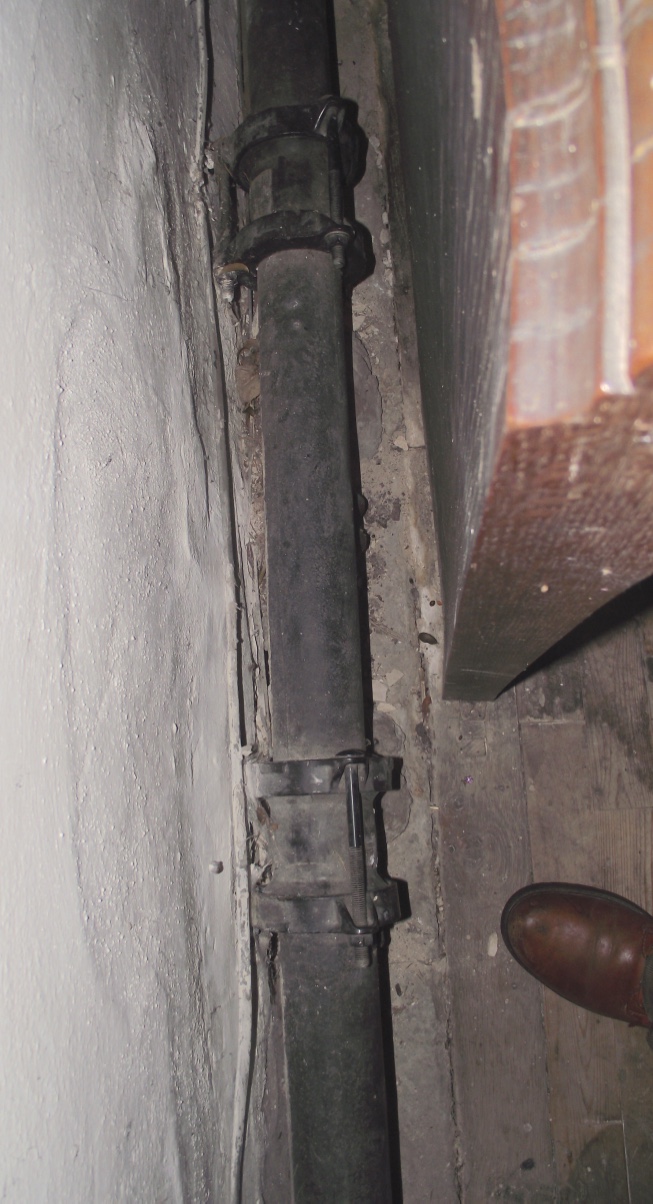 |
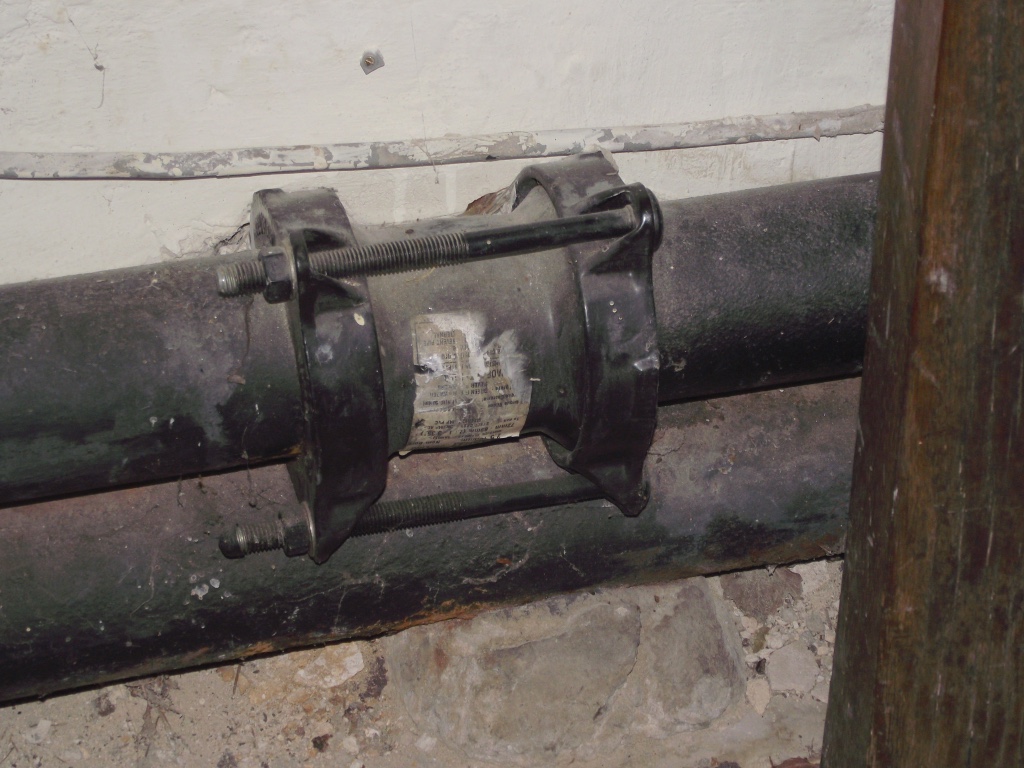 It is very unusual to find expansion joints complete with tie bars installed in old cast iron pipework. The expansion in the pipework is absorbed in the neoprene rubber pipe fitted between the flanges. The flexible tie bars prevented the rubber from distorting. A pair of the expansion joints is fitted in both the flow and return pipes. |
The original pipework distribution comprises a single pipe loop at floor level.